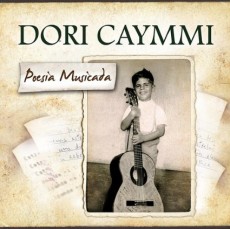
Daily Dose Of Jazz…
Born August 26, 1943, Dorival Tostes Caymmi, the son of famous Brazilian musicians Dorival Caymmi and Stella Maris. He began playing piano at age eight, studied music theory at the Conservatorio Lorenzo Fernandez and in 1959 made his professional debut accompanying his sister, Nana.
In 1960 Dori became a member of Groupo dos Sete, writing music for plays aired on Brazilian television. He co-directed and played viola in the play Opinião, an important transitional work between the styles of bossa nova and MPB and directed the play Arena Conta Zumbi. For a time he produced Edu Lobo, Eumir Deodato and Nara Leao, co-wrote the prize winning song “Saveiros” with Nelson Matta, a collaboration that lasted many years and produced some of Brazil’s biggest hits.
Caymmi played and toured with Paul Winter, arranged and directed albums by Caetano Veloso, Gal Costa and Gilberto Gil, and was involved with the tropicalia movement of the late 1960s, but did not record in this style himself due to his distaste for Euro-American pop music. He wrote scores for numerous films and television shows in the 1970s and 1980s, moved to Los Angeles, California in 1989 and has since played or recorded with Dionne Warwick, Toots Thielemans, Marilyn Scott, Oscar Castro-Neves, Eliane Elias, Richard Silveira and Edu Lobo; was a collaborator celebrating Tom Jobim at Carnegie Hall and arranged the music for Spike Lee’s film, Clockers.
Dori Caymmi has been nominated for Latin Grammys several times and is a two-time Grammy Award winner for Best Latin Song and Best Latin Samba Recording. The Brazilian singer, guitarist, songwriter, arranger, and producer has an extensive discography dating back to 1964 and he continues to perform and record.
More Posts: arranger,composer,guitar,songwriter,vocal
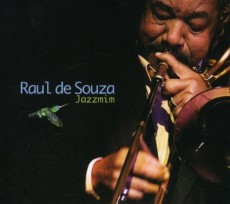
Daily Dose Of Jazz…
Raul de Souza was born August 23, 1934, in Rio de Janeiro, Brazil. Learning to play to trombone in his youth he went on to perform and record with Sergio Mendes, Flora Purim, Airto Moreira, Milton Nascimento, Sonny Rollins, Cal Tjader, Hermeto Pascoal and the jazz-fusion band Caldera.
Raul’s debut album as a leader came in 1965 with A Vontade Mesmo for RCA Brazil followed up three years later with International Hot on the Equipe label. His American debut release Sweet Lucy, produced by composer and pianist George Duke on the Capitol Records label, also produced his sophomore project, Don’t Ask My Neighbors. Colors, a Milestone recording is now a part of the Original Jazz Classics series from Fantasy Records.
By 1979, de Souza was releasing ‘Til Tomorrow Comes, an Arthur Wright production with many of the top soul session players in Los Angeles. Devoid of any jazz, it was an attempt to jump aboard the disco/funk bandwagon. Since then he has added eight more recordings as a leader to his catalogue and produced a DVD, O Universo Musical de Raul de Souza in 2012.
Trombonist Raul de Souza has appeared at many international jazz festivals and after living and working in the United States for many years, he has returned to live in Brazil where he continues to play and compose.
More Posts: trombone
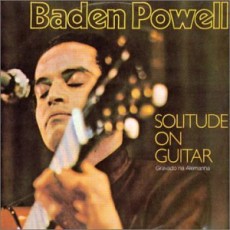
Daily Dose Of Jazz…
Baden Powell de Aquino was born on August 6, 1937 in Varre-Sai in the state of Rio de Janeiro, Brazil. Simply known as Baden Powell, his father, a scouting enthusiast, named him after Robert Baden Powell founder of the boy scouts. Growing up in a Rio suburb from age three, proved profoundly influential, as his house was a stop for popular musicians. He started guitar lessons with Jayme Florence, a famous choro guitarist in the 1940s, and soon proved to be a young virtuoso, winning many talent competitions before he was a teenager. Fascinated by swing and jazz, his main influences were firmly rooted in the Brazilian guitar canon.
By fifteen, he was playing professionally, accompanying singers and bands in various styles. In 1955, Powell was playing with the Steve Bernard Orquestra at the Boite Plaza, formed the new Hotel Plaza Trio with Ed Lincoln and with their young musician friends took part in after-hours jam sessions, gaining notice in the growing Brazilian jazz scene.
Achieving much wider fame in 1959 by convincing Billy Blanco to put lyrics to one of his compositions resulted in a song called “Samba Triste” and quickly became very successful for Baden. In 1962, he met the poet-diplomat Vinicius de Moraes and began a collaboration that yielded some true classics of 1960s Brazilian music. Together they transcended the prevailing bossa nova by fusing Afro-Brazilian with samba. During those years he released several recordings on Brazilian French and German labels and his 1966 “Tristeza on Guitar”, is considered by many to be a high point in his career.
Powell would go on to be the house guitarist for Elenco Records, the guitarist on Elis Regina’s TV show “O Fino da Bossa”, partner with poet Paulo Cesar Pinheiro and produced another series of Afro-Brazilian inspired music, tour Europe and record profusely until his health began failing him due to alcohol and cigarette abuse and his star dimmed. Returning home to Brazil he continued to record and perform and a renewed public recognition of his work came around that time. However, after many years of abuse, and he fell terminally ill and on September 26, 2000 guitarist and vocalist Baden Powell passed away in Rio de Janeiro of pneumonia triggered by diabetes.
His recordings span five decades beginning with his first appearances as accompanist on a handful of big band and samba recordings from the 1950s. He recorded his first solo album in 1959, but it was released in 1961. H e leaves us with a discography of some 55 recordings as a leader and numerous more as a sideman. He was one of Brazil’s most prominent and celebrated guitarists.
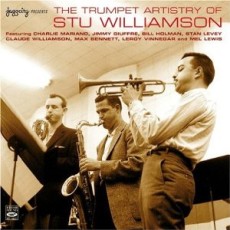
Daily Dose Of Jazz…
Stu Williamson was born on May 14, 1933 in Brattleboro, Vermont and is the younger brother of jazz pianist Claude Williamson. The trumpeter relocated to Los Angeles in 1949 and became a regular on the West Coast scene. He played with Woody Herman, Mel Lewis-Pepper Adams Quintet, Elmo Hope, Lennie Niehaus, Billy May and Charlie Barnet the first half of the Fifties.
Williamson played a significant role in Stan Kenton’s Orchestra, Howard Rumsey’s Lighthouse Café All-Stars and Terry Gibbs’s Dream Band. Between 1954 and 1958 Williamson played intermittently with Shelly Manne and was a ubiquitous session player up until 1968.
Although he had a beautiful, rich, round tone and his ability to create melodic solos full of invention, power and clarity gave him the opportunity to front small groups and big bands. Disappearing from the jazz scene after battling drug addiction for much of his life, including for years after he left the music. Trumpeter Stu Williamson passed away on October 1, 1991 in Studio City, California.
More Posts: trumpet
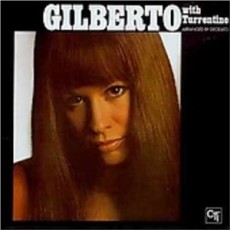
Daily Dose Of Jazz…
Astrud Gilberto was born Astrud Weinert on March 30, 1940 in the state of Bahia and raised in Rio de Janiero, the daughter of a Brazilian mother and a German father, She married Joao Gilberto in 1959, emigrating to the United States in 1963 and has continued to reside in the US ever since. They divorced in the mid-1960s and she began a relationship with her musical partner, Stan Getz.
Although now widely known for her samba and bossa nova music, she had never sung professionally and it was at the behest of her husband Joao that she sang on the recording of the Getz/Gilberto album featuring Stan Getz, Joao Gilberto and Antonio Carlos Jobim. Providing the English vocals to the 1965 Grammy Award-winning song “The Girl From Ipanema”, and her career was launched garnering her worldwide recognition and establishing her as a jazz and pop singer.
Her first solo album was The Astrud Gilberto Album in 1964, went on tour with Stan Getz singing bossa nova and American jazz standards, Gilberto didn’t start to record her own compositions until the 1970s. Her repertoire included such standards as “The Shadow Of Your Smile”, “It Might As Well Be Spring”, “Love Story”, “Fly Me To The Moon”, “Day By Day”, “Here’s That Rainy Day” and “Look to the Rainbow”.
Astrud has recorded songs in Portuguese, English, Spanish, Italian, French, German and Japanese, has received the “Latin Jazz USA Award for Lifetime Achievement”, inducted into the “International Latin Music Hall of Fame”, contributed to the Aids benefit album Red Hot + Rio, has had numerous versions of her songs sampled and used in movies, is a fine artist and ardent animal rights advocate.
More Posts: vocal


